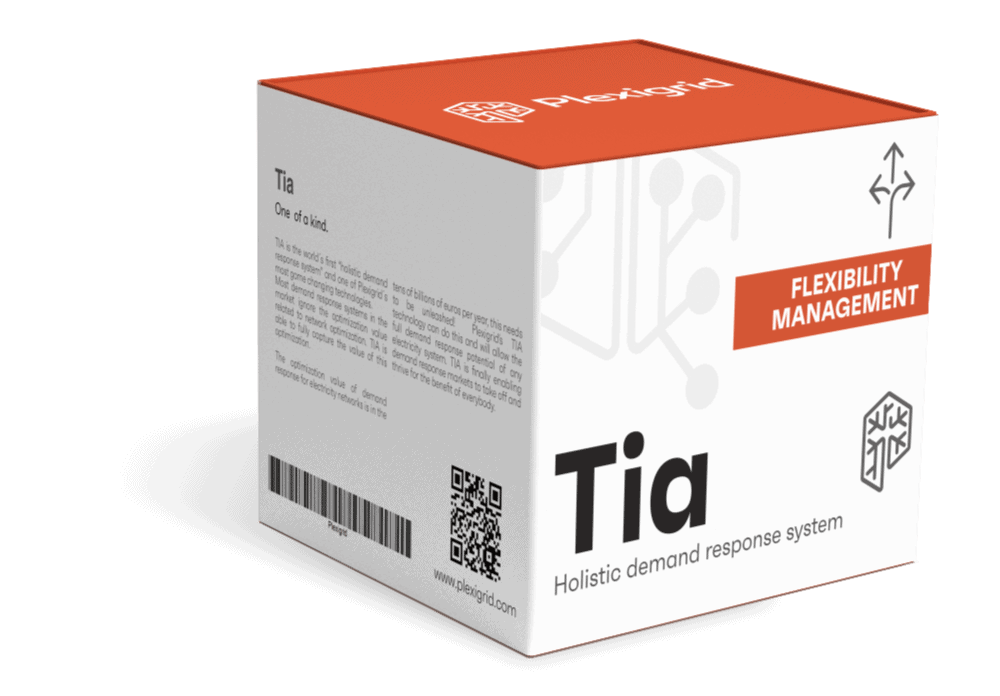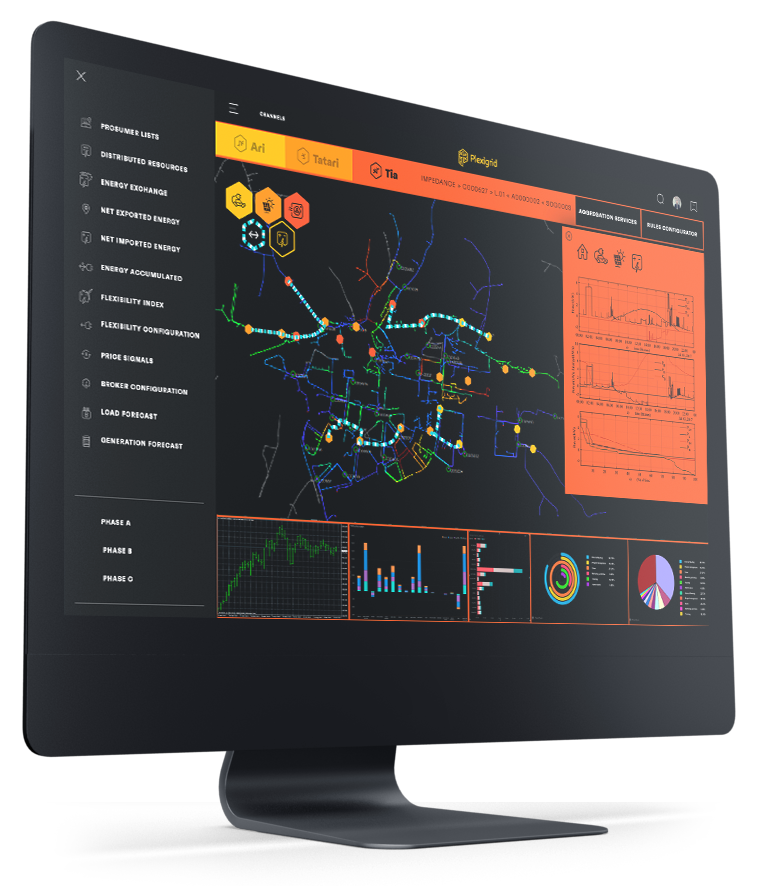
TIA maximizes the total value of demand response optimization for retailers, consumers, prosumers, aggregators, energy communities and network operators.

Tia
One of a kind.
TIA is the world´s first “holistic demand response system” and one of Plexigrid´s most game changing technologies.
Most demand response systems in the market ignore the optimization value related to network optimization. TIA is able to fully capture the value of this optimization.
The optimization value of demand response for electricity networks is in the tens of billions of euros per year, this needs to be unleashed! Plexigrid’s TIA technology can do this and will allow the full demand response potential of any electricity system. TIA is finally enabling demand response markets to take off and thrive for the benefit of everybody.
Tia
Why are conventional demand response systems not taking off?
Most current demand response systems are focused on optimizing a flexible consumption VS, an hourly electricity price (pool price) or the prevailing electricity tariff. While that is all very good it fails to address most of the optimization potential that demand response has to offer (i.e. demand response for optimization of networks). There are several reasons for this:
- Electricity pool price in most developed economies makes only about one third of the electricity bill of customers. The other two thirds are grid charges and taxes.
- With some exceptions, most developed economies have production overcapacity. Most of the shortages in the system happen in the distribution systems (particularly as EVs, heat pumps and distributed generation are growing exponentially). As an example at 7PM in Stockholm, Sweden certain parts of the distribution network can be under heavy pressure, but the Nordpool (the electricity pool where electricity prices in the Nordic countries are determined) has “plenty of oxygen left”, so pool prices at 7PM go up just slightly, say 10%. Since these prices only make 30% of the total, the final change in the total price, by the customer who shifted the demand away from 7PM is 10%x30%= 3%. Who is interested in engaging Demand response for a 1,5% savings potential?
- Most cost reduction potential in most developed economies is in the savings that demand response can create in the distribution networks. In most European countries and in many others, grid charges account for a higher % of the electricity bill than the electricity itself. While pool prices have stayed stable in most of Europe over the last decade, grid charges have gone up and up and up, driven by all-time high grid investments in increasing peak demand capacity. However grid charges are not formed in a supply-demand market with a real time dynamic price signal. Prices are regulated and therefore static. Today, consumers do not benefit from the optimization potential of their flexible consumption vs grid bottlenecks. With a demand response system that could shift consumption away from the hours where the grid is congested to hours where the grid is underutilized, a large portion of these new investments could be avoided, resulting in large CAPEX savings for DSOs (and for consumers, since they pay for these CAPEX investments of DSOs via grid charges).
- Electricity fees and taxes are also static (until now).
Tia
Capture the full potential of your flexibility VS electricity prices and VS network congestions.
Plexigrid’s TIA unique technology allows the simultaneous optimization of any flexible consumption/production/storage vs :
- Real time electricity prices (possible with most demand response platforms).
- And also vs real time network congestions and vs any other fees, charges, taxes or price signal (only possible with Plexigrid’s Tia ).
Such a setup allows capturing the full end to end optimization potential, from the powerplant, to the networks, to the customer’s home or business. Users can join the TIA platform, connect their flexible devices (electrical cars, batteries, heat pumps…), set their flexibility limits (e.g. disconnect heat pump up to 1h during peak time or until temperature drops to 22 degrees, car to be fully charged by 6,30 AM) and extract maximum valuable from their flexibility.
With TIA, DSOs can offer dynamic network pricing signals to their customers, because now they will know in real time: where, when, why and by which consumers the bottleneck has been formed and what has to be done on the local flexible demand (local EVs, batteries, heat-pumps… connected to the Tia platform in the part of the network where the bottleneck is being formed). Tia allows DSOs to shift peak loads in their networks to time-zones where the grid is underutilized and save tens of billions of euros per year in avoided peak-load capacity upgrades in their networks, and to share these savings with their customers either directly through locally and dynamically determined “flexible grid tariffs” or indirectly by participating in flexibility markets (in this case, Tia technology allows to transform the local instant grid shortages into a price signal in the flexibility market for those consumers, aggregators or flex players who can help resolve that bottleneck by shifting load away from the peak or generating local electricity to ease pressure on the grid). In addition, TIA allows for a simultaneous optimization against instant pool prices so that the DSOs, flex-customers, aggregators and other flex players (like battery operators) can capture full optimization potential by actively participating in demand response.

